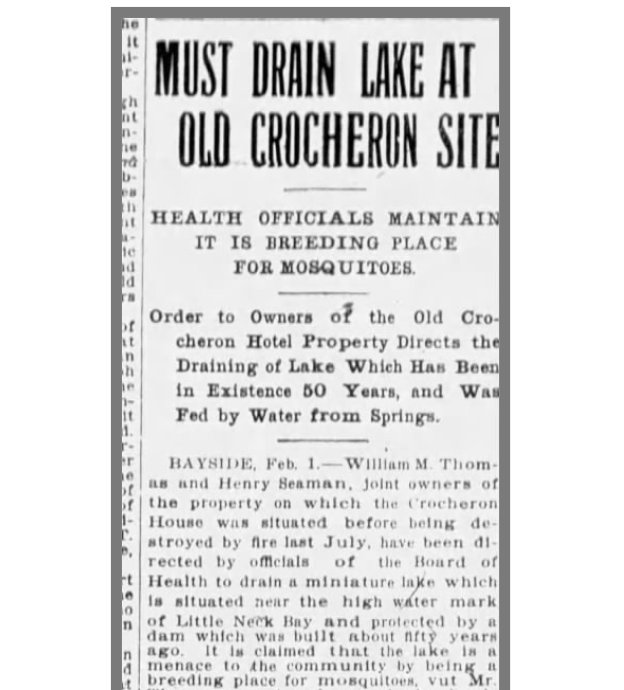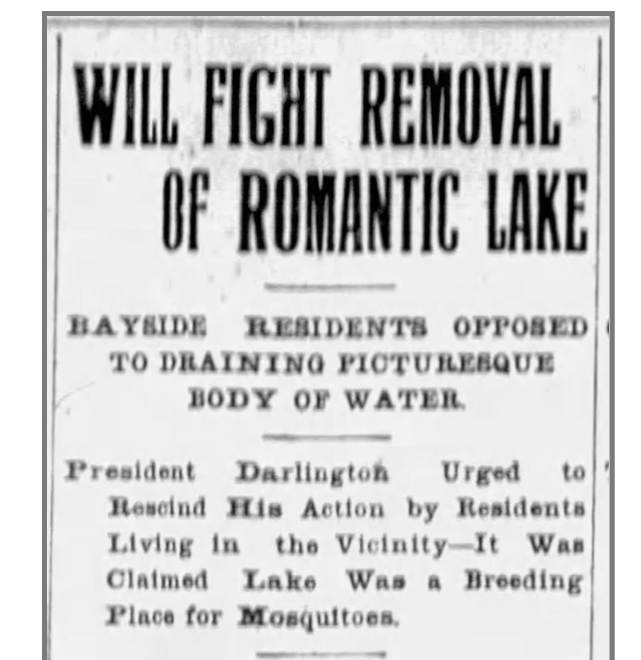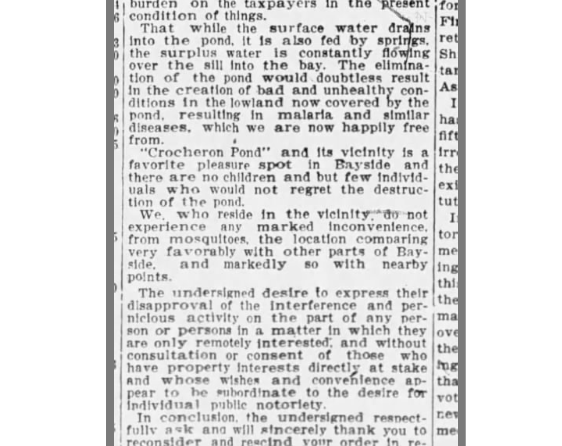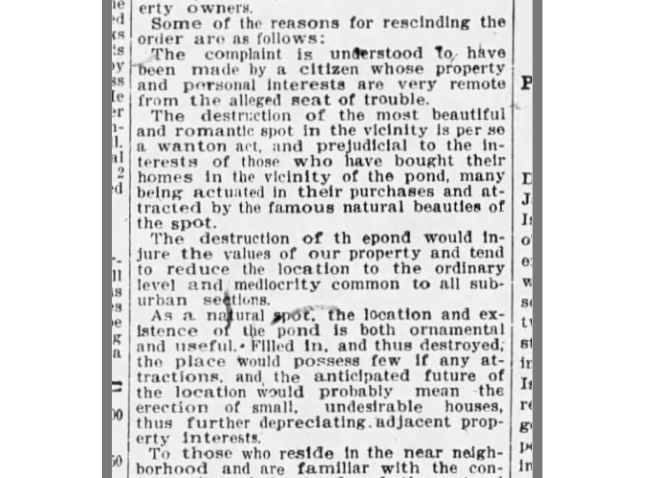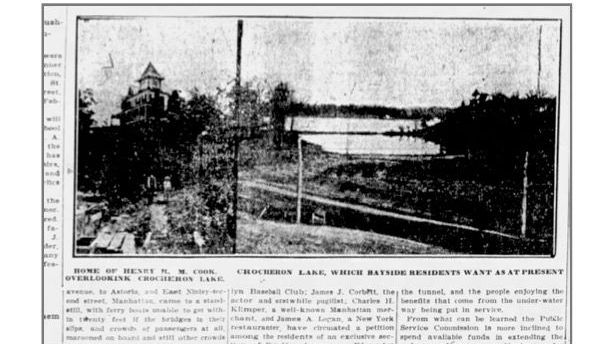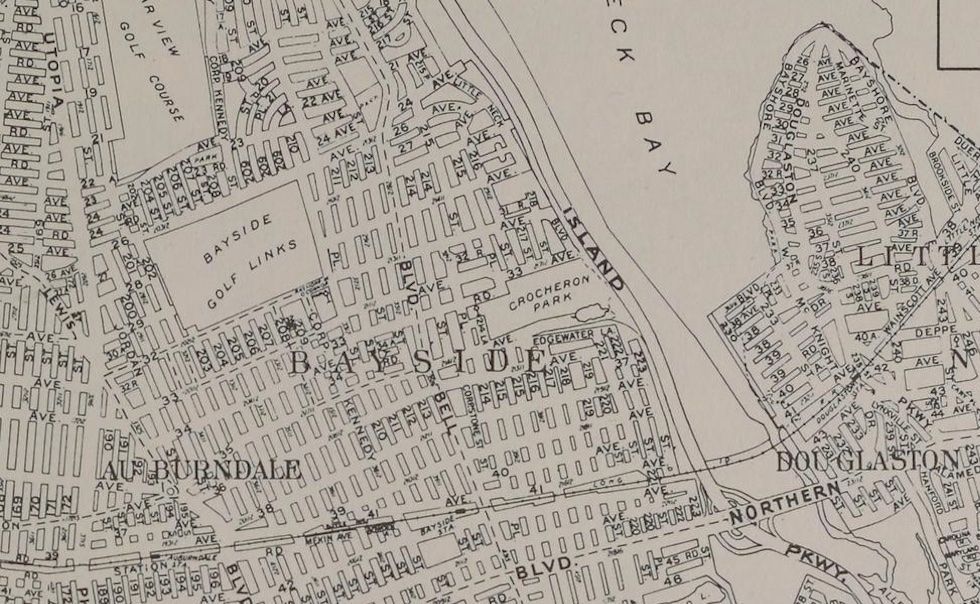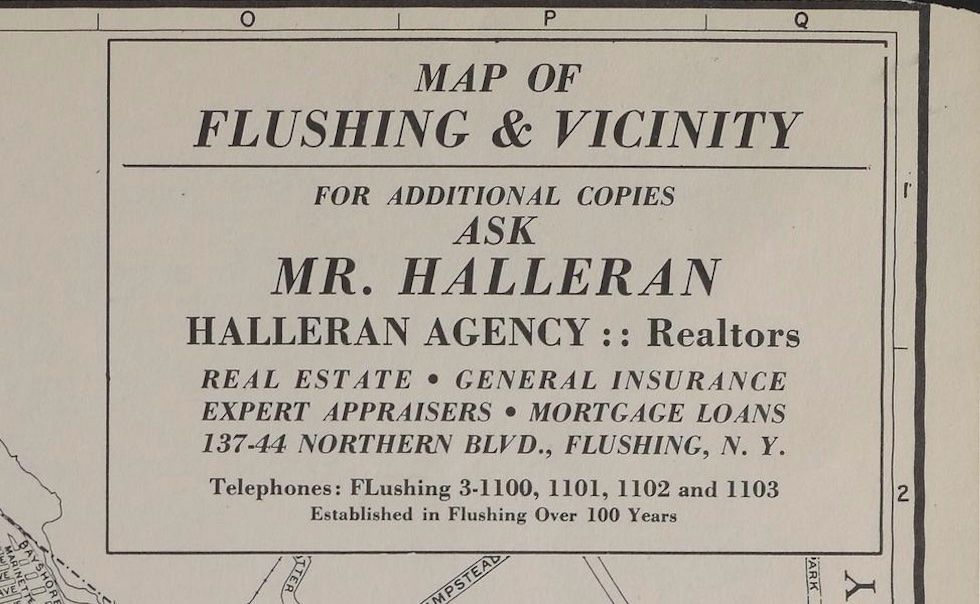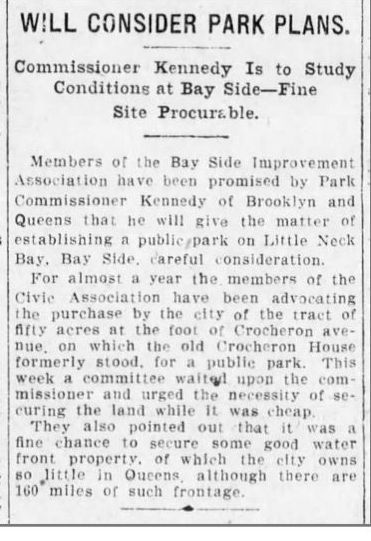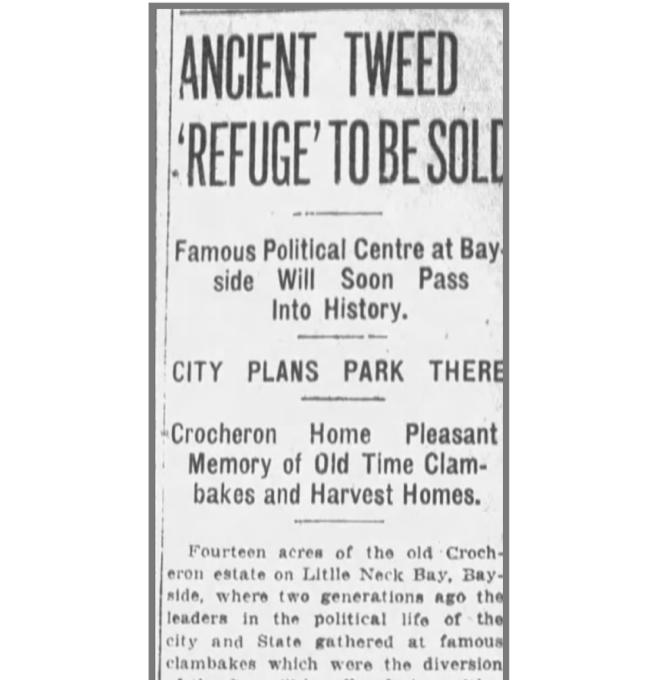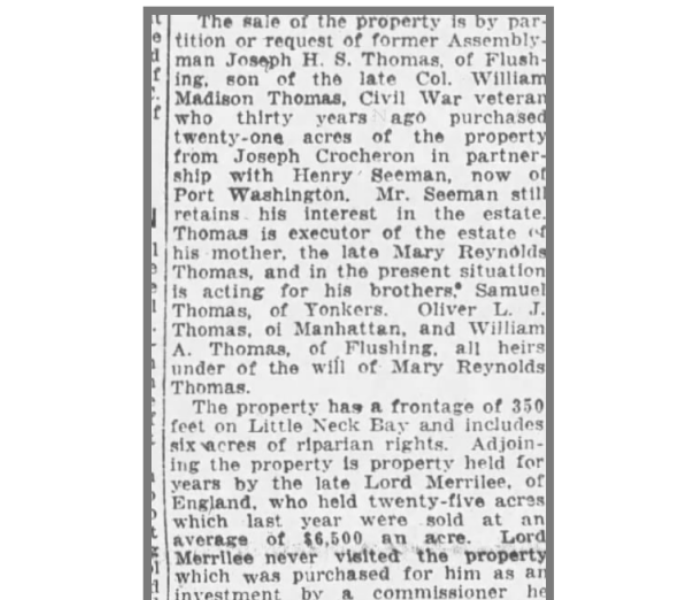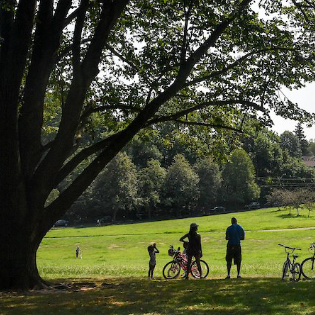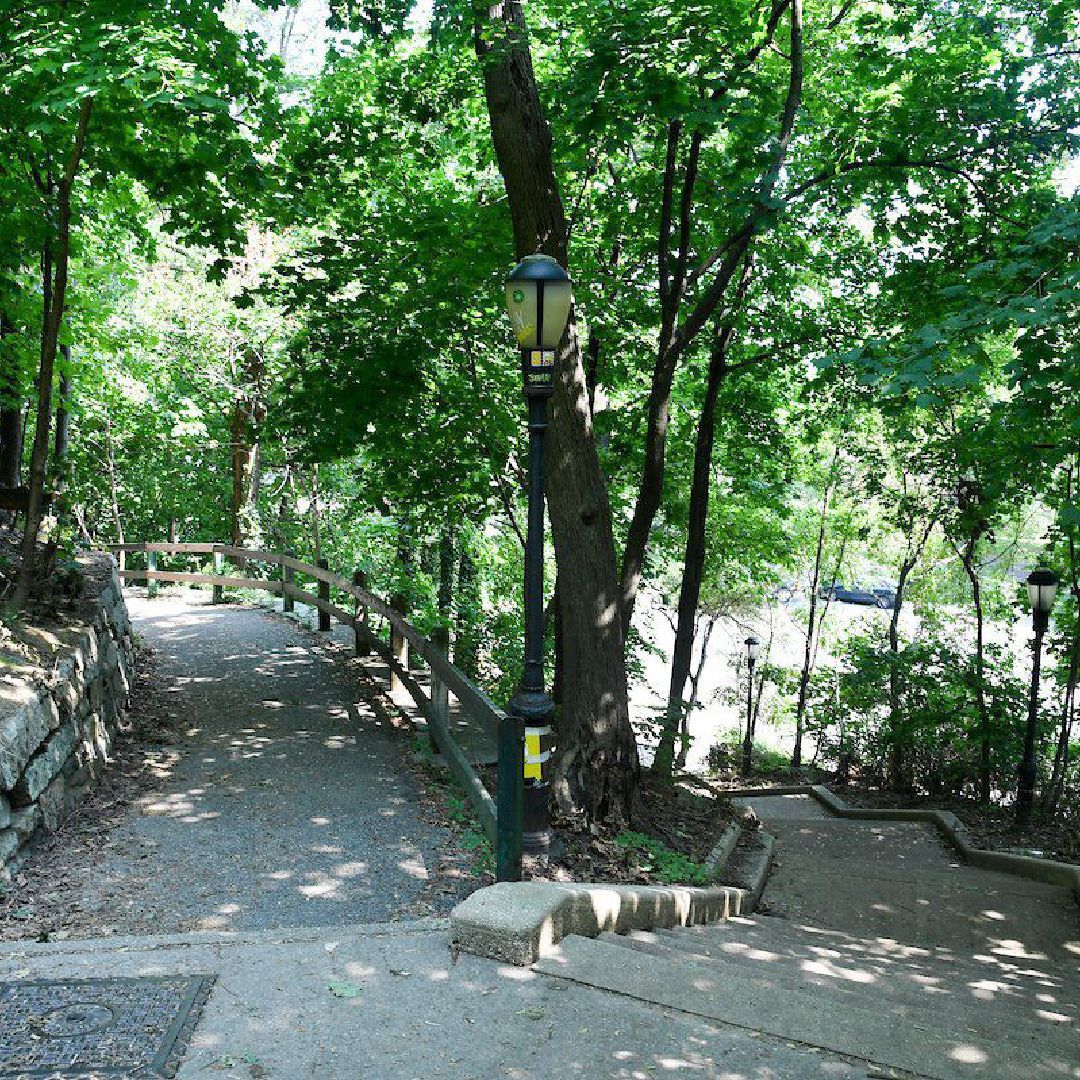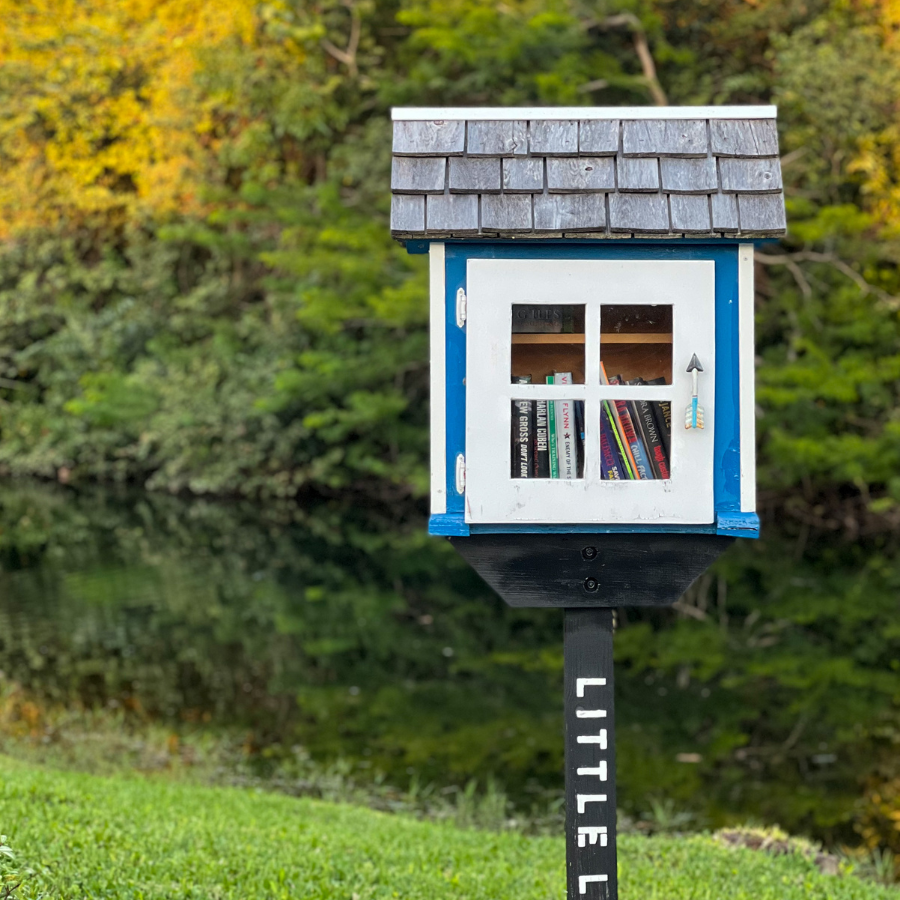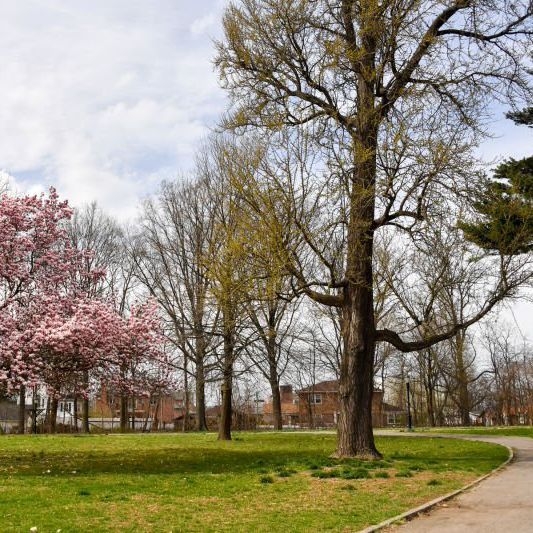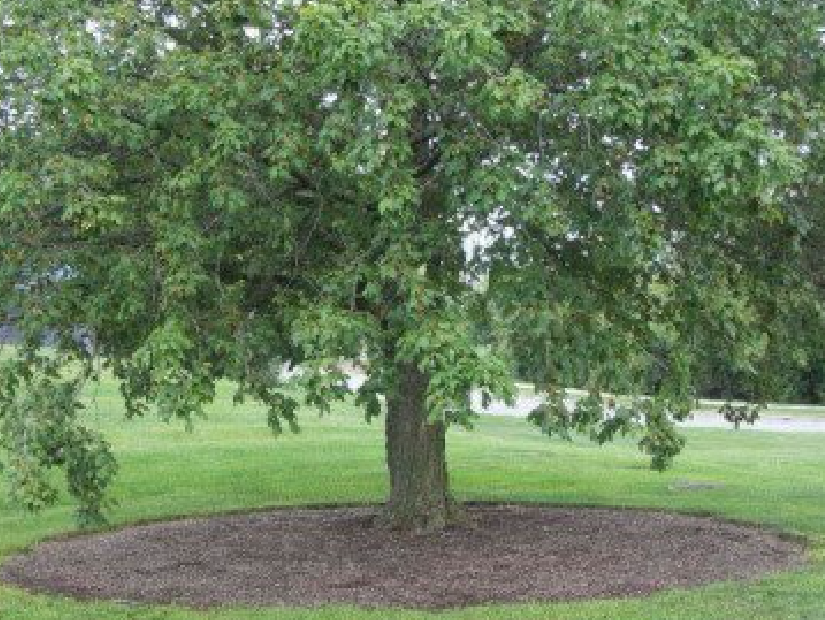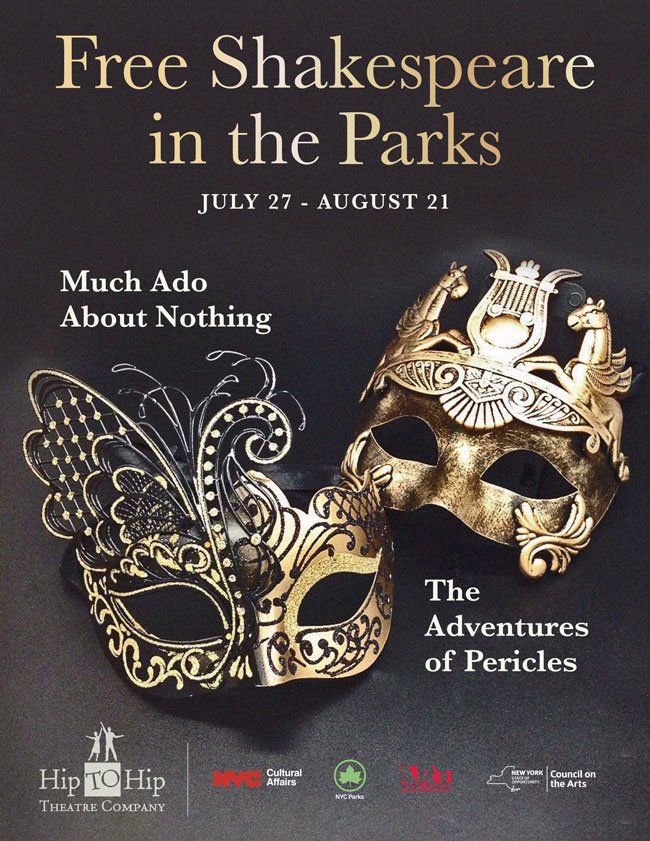Parks Don't Just Happen (Part I)
Learning from Our Park's History
In light of recent events, we are drawing from our park archive and local library archives to learn more about parks as public goods. The first thing we will look into is how civic engagement helps to ensure proper management of parks. This series 'Parks Don't Just Happen' will use Friends' Archive to further advocate for parks!
The history of Crocheron & John Golden Park is a wonderful demonstration of how civil society is responsible for both creating and protecting public goods. The parkland is part of our shared cultural heritage, creating a shared bond that connects community members to each other, our past, and the future. It is also a reminder that parks are a place for all people and it is our responsibility to be good stewards.
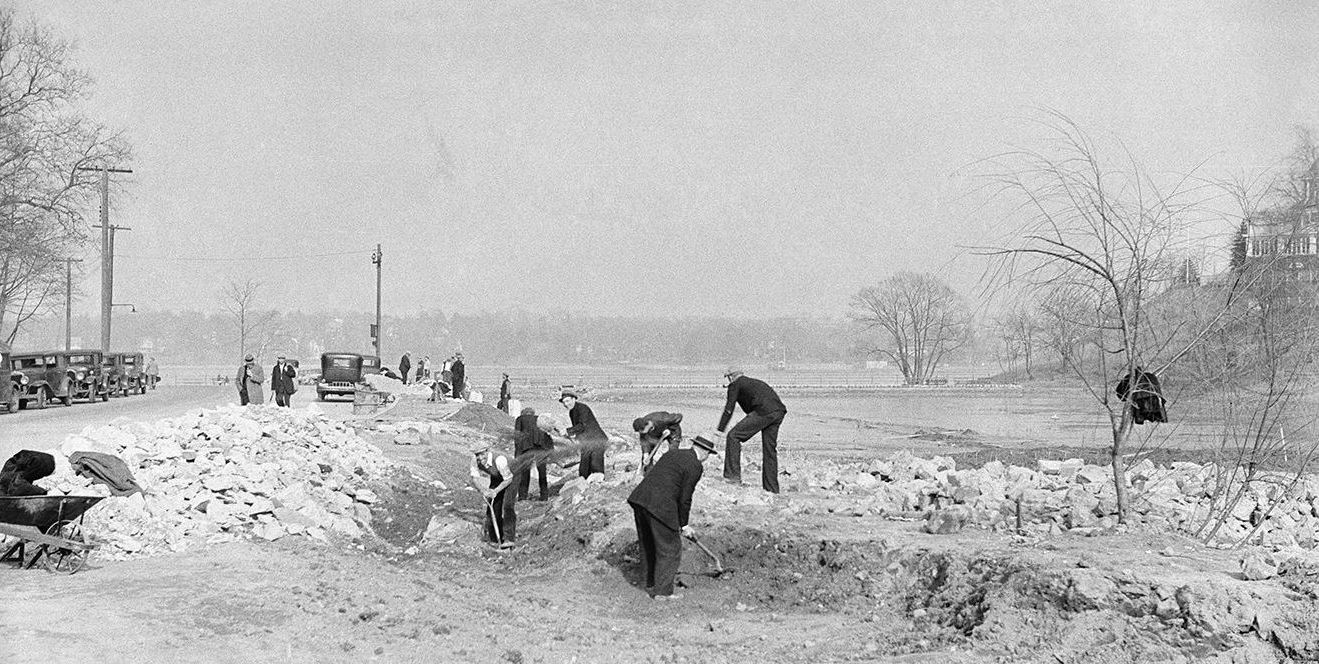
1934 - April 2nd - Photograph of workers demolishing wall at Crocheron Lake. NYC Parks.
Public Good and Public Parks
Our Parks in NYC and around the USA 'don't just happen' - public parks take work from both civil society and government entities. The push for the old Crocheron Estate to become a park was made - an expensive investment that could have been more real estate for developers. Luckily, everything aligned to give our neighborhood a refuge.
What are public goods?
A service or product (like fire departments, education, and parks) that is provided to members of a society, usually owned/managed by the government and provided for through taxation. Much like today, the social contract between people and their elected officials about how to best manage our public goods, is a constant conversation, or maybe a push and pull, to determine what is best. What remains true is that public goods remain publicly owned - even when the management of the public good is carried out by the private sector. When the private sector carries out management of public goods, it is known as a public private partnership, which requires both transparency and checks to ensure management in the public's best interest. These agreements are becoming more common as neoliberal policies promote privatization of public goods. The below image, modified from Public Goods in Everyday Life by June Sekera to improve clarity, helps to illustrate this dynamic relationship.
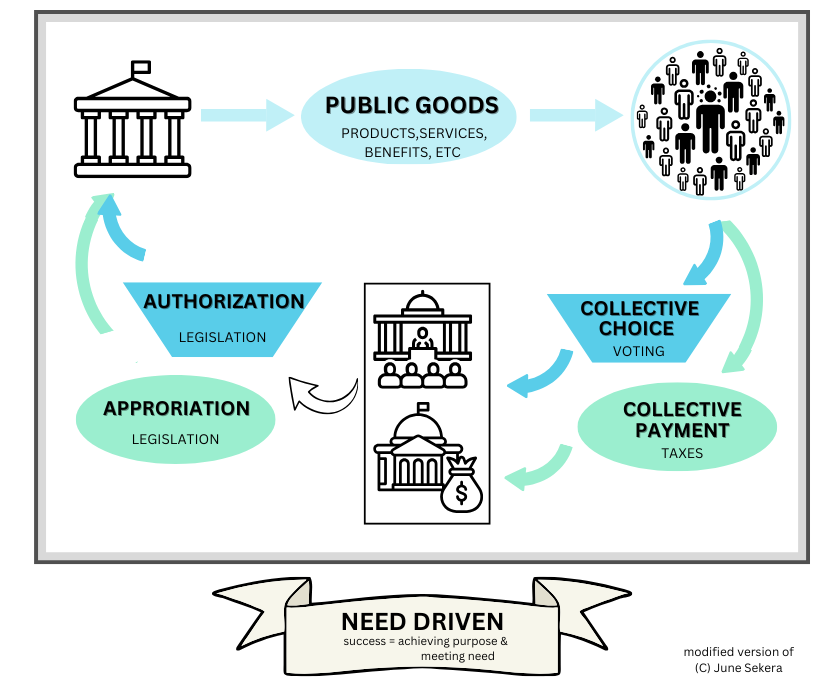
Illustration is modified version from
Public Goods in Everyday Life by June Sekera.
Stewardship Protection for Our Pond
These 1908 articles showcase civil society's power in organizing and petitioning to keep overzealous government administrators from damaging a public good. While the Health Department ordered the owners of the Crocheron Lake to drain it as it was deemed a mosquito breeding ground, local residents opposed the drainage.
Neighbors referred to it as: "The destruction of the most romantic spot in the vicinity." Residents went on to say that filling in the pond would cause injury to their property value "and tend to reduce the location to the ordinary level and mediocrity common to all suburban sections." As we know, Bayside is anything but an ordinary suburban area. The article also states how Crocheron Pond is a point of drainage for the surrounding environment. The area had natural springs which flow through the pond and into the bay. As one of the lake's neighbors stated, we are "delighted at the civil pride manifested" by the community surrounding the lake. Luckily, their advocacy saved the pond from being filled in.
1908 - February 1st - Must Drain Lake at Old Crocheron Site. Brooklyn Times Union.
1908 - February 3rd - Will Fight Removal of Romantic Lake. Brooklyn Times Union.
Real Estate: Ready to Divide
While Bayside residents of the early 1900s did not have to worry about neoliberal agenda playing fast and loose with the privatization of public goods - titans of industry and real estate were still looking for their cut of our little community by the bay.
Real estate and tax maps from the early 1900s depict the area where Our Park is currently. Instead of acres of parkland, the area is divided up into parcels of land. The 1909 map shows that the City expected they would be able to drain the lake,whereas Oakland Lake is shown on the larger version, an assumption that the NYC Health Department's 1908 recommendation was carried out. It also shows that, as of 1909, the City did not have any unified plan to purchase the land surrounding the former Crocheron House. Instead, it shows the area broken up into a grid, ready to be developed for real estate.
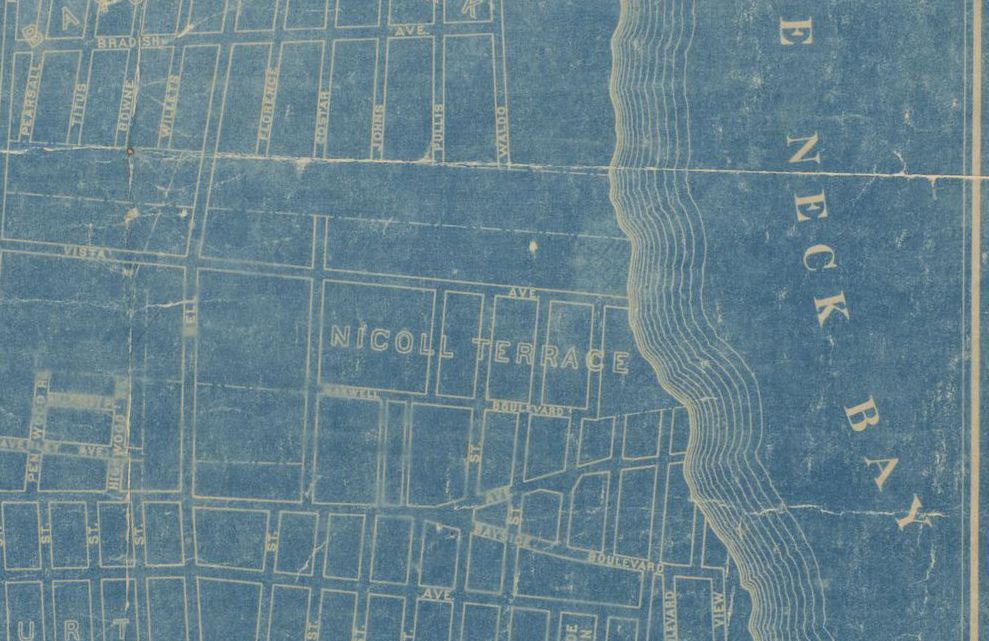
1909 - Bayside Map of Third Ward. G.W. Bromley & Co. (Publisher) - Queens Public Library.
The following shows the 1930s-1950s shows the Halleran Agency's real estate map of the Flushing area. While this map shows Crocheron Park, it assumes that John Golden or his heirs would sell his property. Instead, Golden bequeathed the 17-acre estate to the city "for the use and enjoyment by the young people of the community of all races and creeds in a manner similar to that in which I made this property available for recreation and community acts during my lifetime." An amazingly generous gesture by a man affectionately known as Mr. Bayside.
1930s - 1950s - Map of Flushing & vicinity. Creator: Halleran Agency.
Advocacy to Purchase Land for Public Park
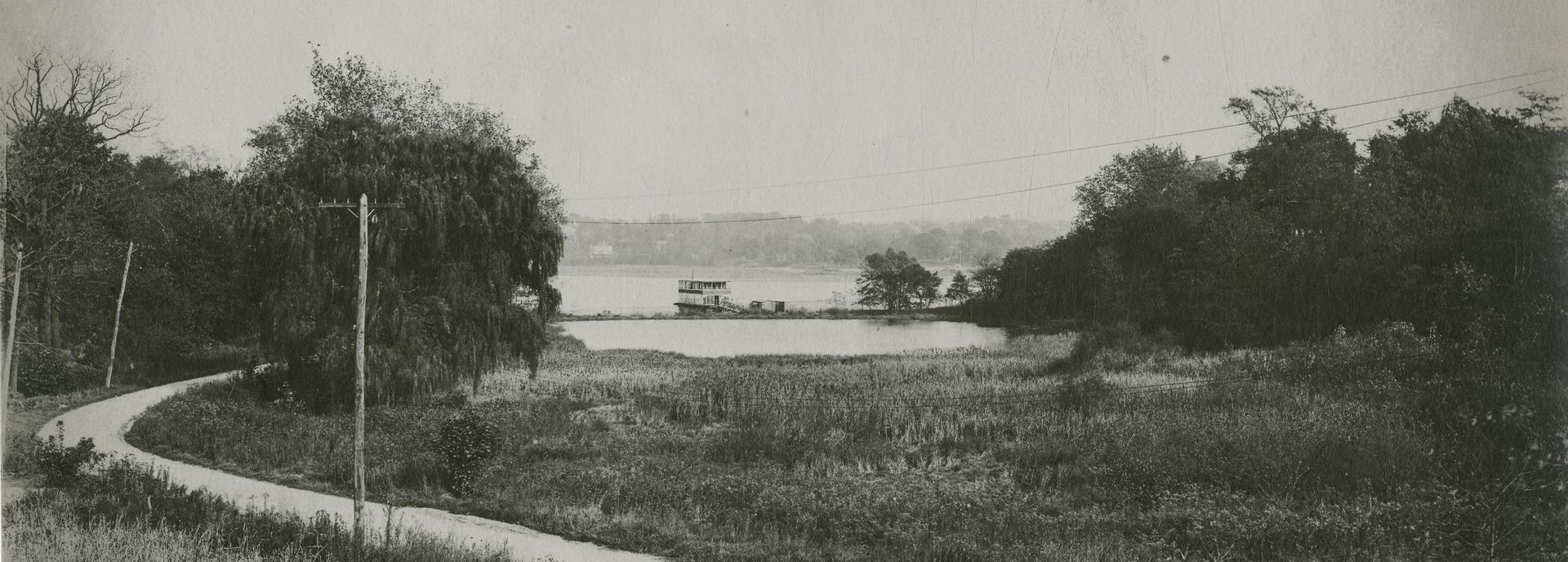
1922 - Looking East across Mickle Pond (current Golden Pond) and across Little Neck Bay Towards Little Neck. Queens Public Library Archives.
By the early 1900s, the Bayside Community became accustomed to enjoying the green space, lake, and bay access at the end of 35th Avenue. Above shows the park a little over a decade after the Crocheron House burned down. Along with using the natural area as a refuge, the land became a refuge for people looking to build an encampment, as seen in the distance in this photograph. By 1911, the community began to vocalize their desire for a public park - and by 1923 the City was prepared to purchase the property!
1911 - January 11th - Will Consider Parks Plan. Brooklyn Daily Eagle.
1911 - February 15th - Bayside Wants a Park. The Brooklyn Daily Eagle.
1923 - July 12th - Ancient Tweed 'Refuge' to be Sold. Brooklyn Times Union.
By the mid to late 1920s, The Chamber of Commerce of the Borough of Queens (present day Queens Chamber of Commerce) focused their May 1926 publication on Parks, and the inequity in the borough's parkland compared to other boroughs in the City.
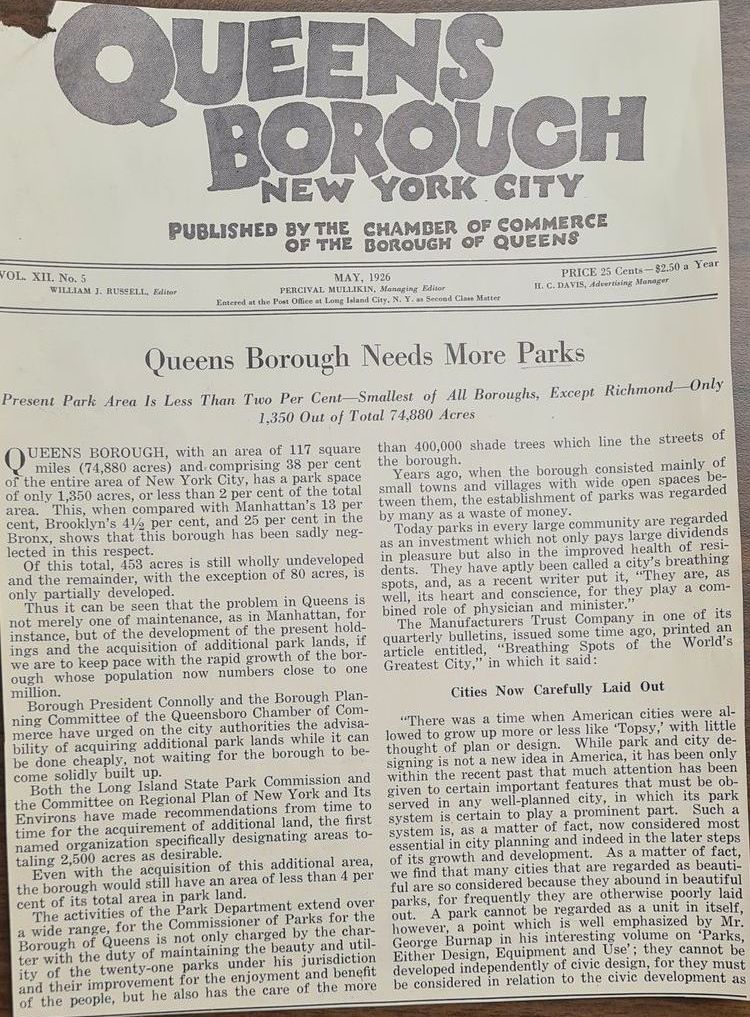
1926 - May - Queens Borough Needs More Parks. Queens Borough New York City. Published by The Chamber of Commerce of the Borough of Queens. Queens Public Library Archives.
Ten days before Black Thursday (October 24, 1929) the below article called out Queens Borough's Lack of Parks, staring that at 1,200 acres of parkland would be more than doubled by the addition of parkways and small parks. The author outlined the increase in population that is expected in Queens over the next decade, that is calling for more parkland to be set aside before the cost become too large.
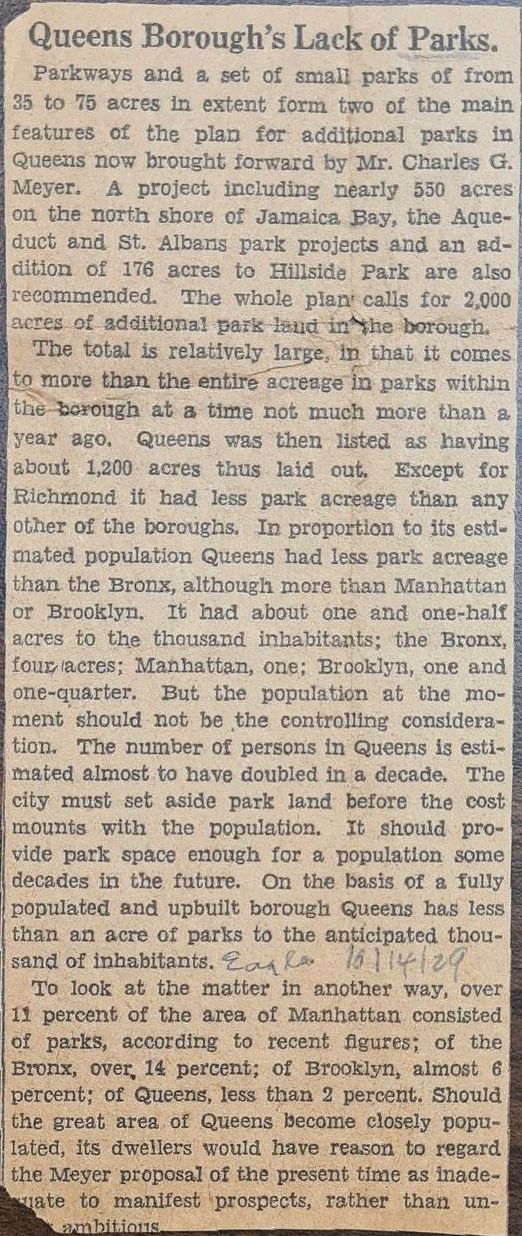
1929 - October 14th - Queens Borough's Lack of Parks. [publication unknown]. Queens Public Library Archives.
Work and Funding for Crocheron Park
Once the City purchased the land it could then work on obtaining the necessary funding to develop it into a park. In a 1931 article titled "C.C. Committee Backs Mile Pond Park Plan," Queens Park Commissioner Albert Benninger asked the "committee to support his appeal to the Board of Estimate for $400,000 to change Crocheron Park in Bayside form [sic] a "partial and costly nuisance" to a beautiful recreation place." The article states that the Chairman and other committee members gave the Commissioner and people of Bayside "every assistance" to achieve this goal.
By 1933, the Queens Park Commissioner continued his mission that Parks provide for all people of Queens. Laying out his argument for parks that the streets are no longer safe for children to play, citing hundreds of letters from residents and civics groups, and giving credit to "the taxpayers who so generous permit the department to the use of their land. The cost for the work, was little or nothing, as Emergency Labor was used in every instance."
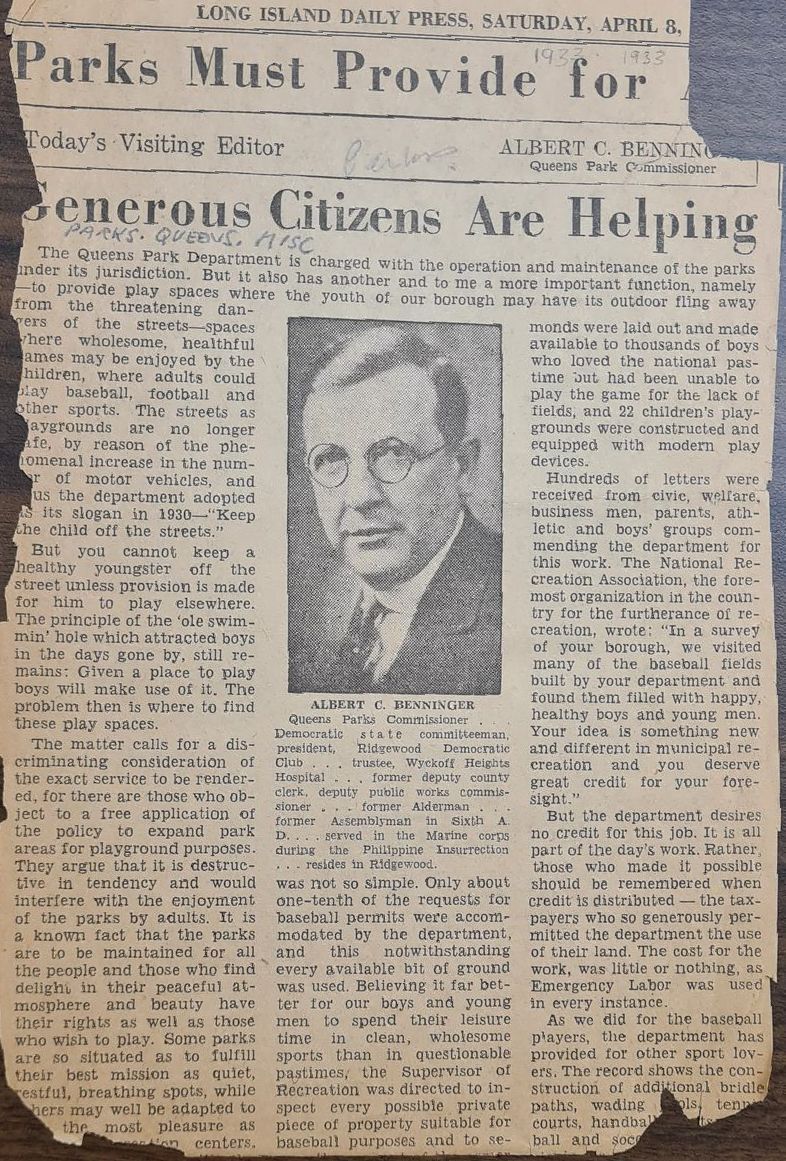
1933 - April 8th - Generous Citizens Are Helping. Visiting Editor, Albert C. Benninger, Queens Park Commissioner. Long Island Daily Press. Queens Public Library Archives.
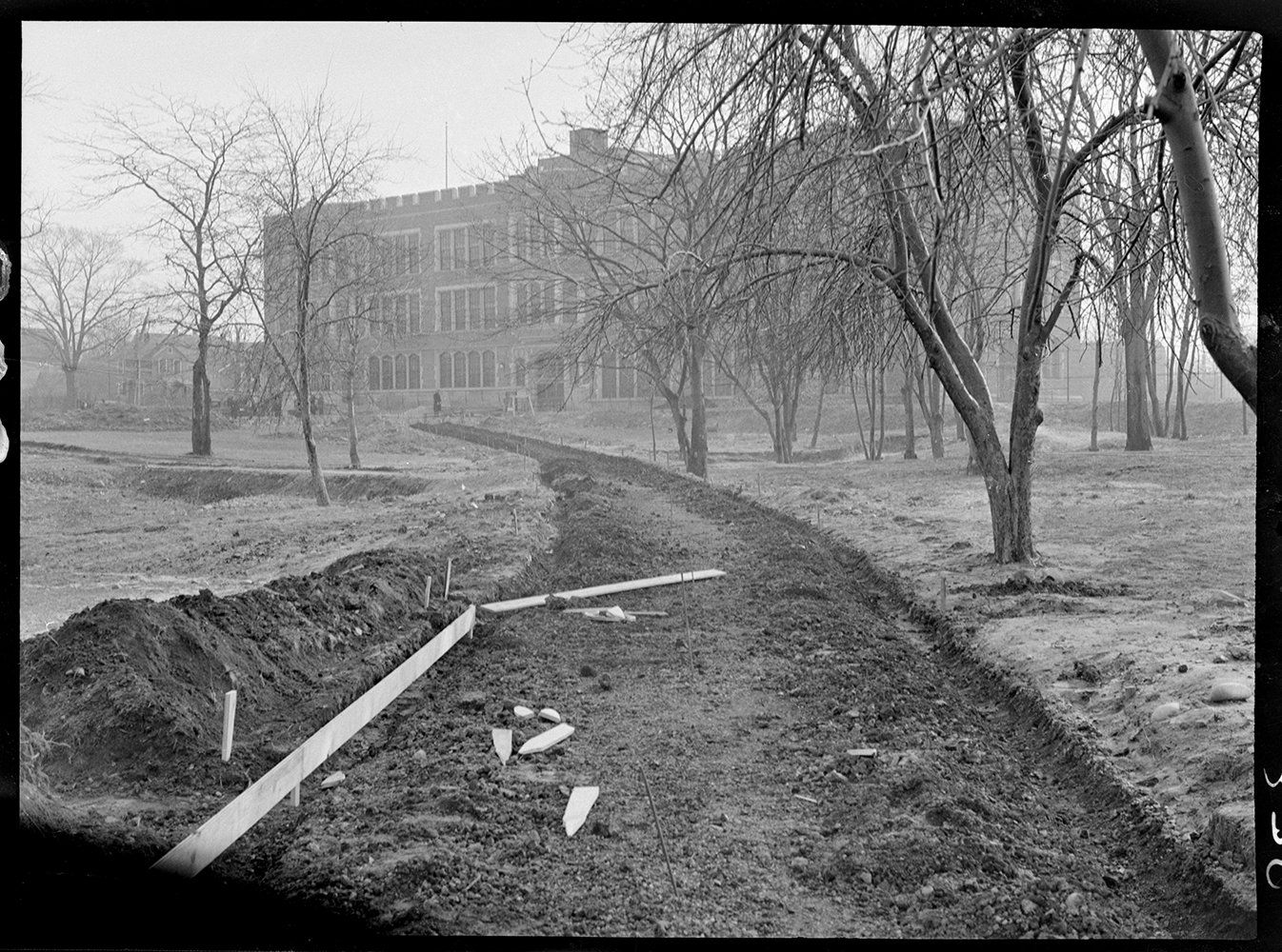
1934 - April 2nd - Photograph looking west at the Construction of a path in Crocheron Park, with PS41 in background. NYC Parks.
Jessica Burke – Founding President, Friends of Crocheron & John Golden Park
A Bayside resident since 1989, Jessica Burke attended PS 41, where she developed an early interest in environmental sciences. She was especially influenced by Mrs. Cilmi, whose demonstration—carefully slicing an apple to illustrate the fragility and scarcity of Earth’s resources—left a lasting impression.
In the summer of 2020, Jessica founded Friends of Crocheron & John Golden Park to help clean up and restore this local treasure. She also created a historical archive to connect the community through their shared cultural heritage.
Since then, Jessica has used the organization as a platform to advocate for increased city funding for parks while opposing the allocation of public funds to private organizations that manage parklands without the same transparency required of NYC Parks. She has provided testimony before the City Council in support of these efforts. Jessica holds an M.A. from John Jay College of Criminal Justice and is the author of When the Well Runs Dry: Ethics and the Privatization of Water, a work that deepened her commitment to preserving public resources—including her local park.

